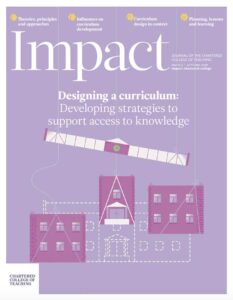A design for life – curriculum and assessment for long-term learning
Written by: Philip Stock

4 min read
The when, how and why of assessment are ultimately dependent on what is being assessed, namely the curriculum. Like many schools, we spent a lot of time redesigning Key Stage 3 assessment following the removal of National Curriculum levels. It took us a while to realise, however, that we were approaching things the wrong way round: you don’t start with assessment; you start with what you want students to learn and then you decide when and how you are going to assess the extent to which they have learned it. Our focus therefore shifted to defining what we wanted students to learn, and aligning this with when and how we were going to assess it.
What are big ideas?
At the heart of our curriculum is the principle of big ideas. Dylan Wiliam (Wiliam, 2013) describes these as ideas that ‘enable teachers and students to see the connectedness of the whole curriculum – trunk and branches if you will, rather than a disorganised collection of twigs and pine needles’. Our curriculum is
Join us or sign in now to view the rest of this page
You're viewing this site as a guest, which only allows you to view a limited amount of content.
To view this page and get access to all our resources, join the Chartered College of Teaching (it's free for trainee teachers and half price for ECTs) or log in if you're already a member.
This article was published in September 2018 and reflects the terminology and understanding of research and evidence in use at the time. Some terms and conclusions may no longer align with current standards. We encourage readers to approach the content with an understanding of this context.
0
0
votes
Please Rate this content
Please login to comment
0 Comments
Oldest
Newest
Most Voted
Inline Feedbacks
View all comments










